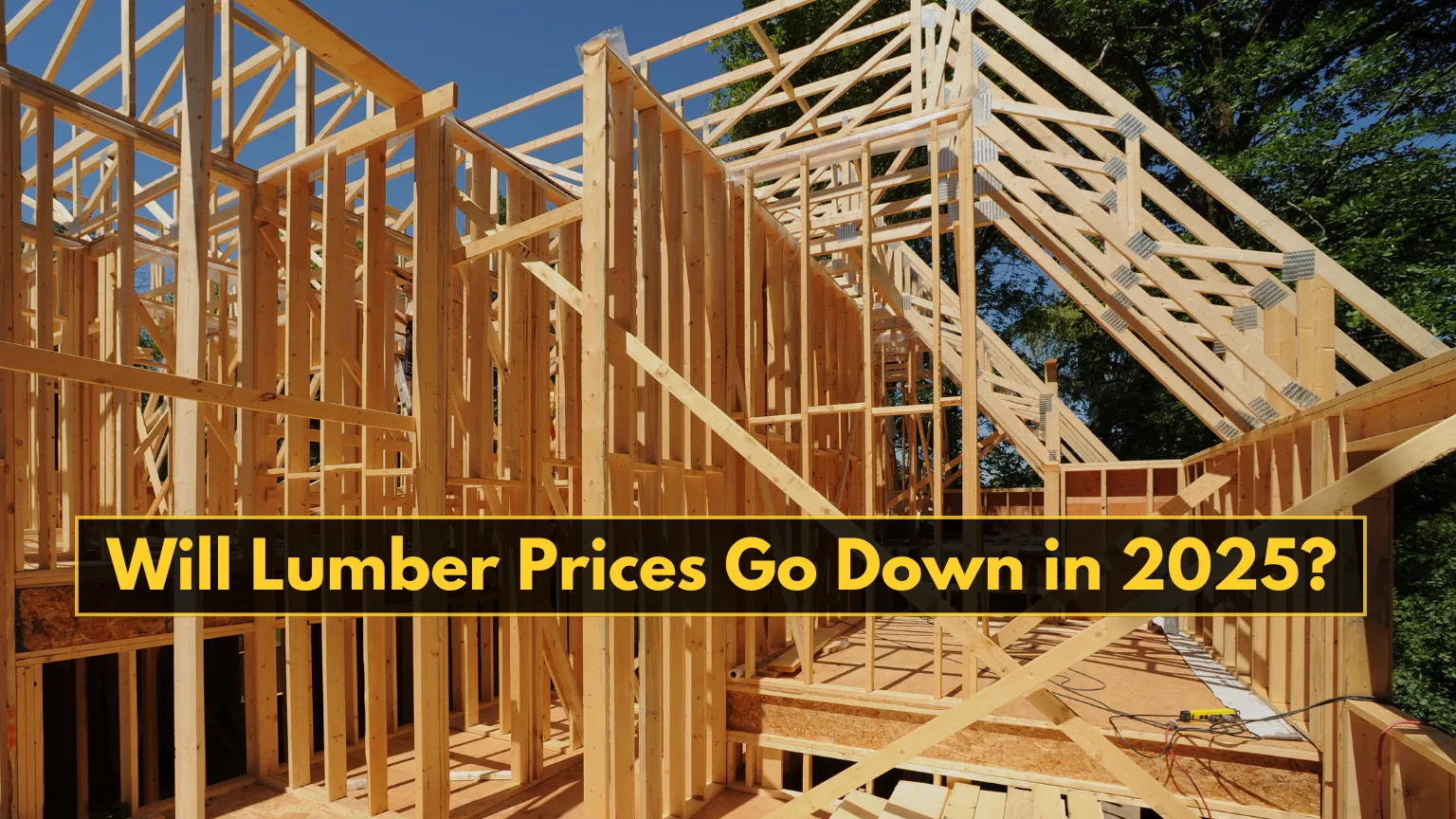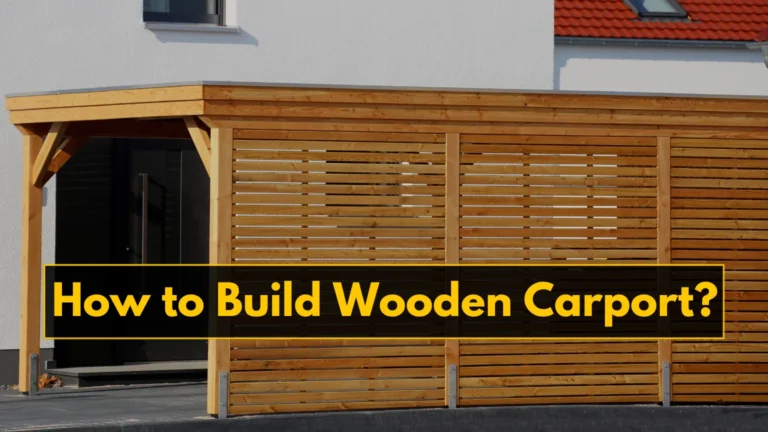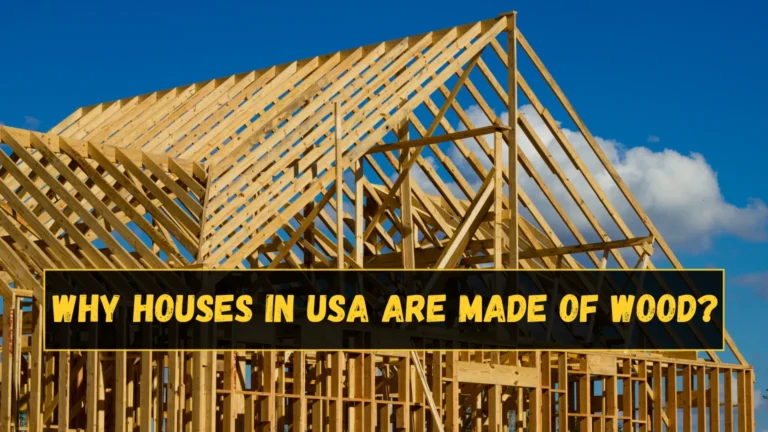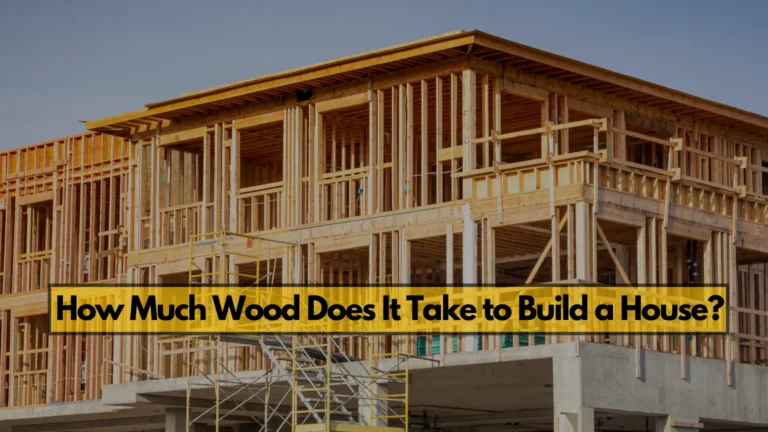Will Lumber Prices Go Down in 2025
By 2025, the price of lumber is expected to stabilize, but if it goes down significantly, it is anybody’s guess. Lumber prices have had a wild ride in recent years due to factors such as the pandemic’s effects on supply chains, changes in housing demand, and increasing production costs. In the future, lumber prices will largely depend on interest rates, improvement in supply chains, and other alternative building materials. Although many signs indicate that the prices may stabilize, the challenges, which include inflation, high demand for construction materials, and geopolitical tensions, will likely keep the prices from dropping significantly.
The past few years have dramatically changed lumber prices as supply chain disruptions, changes in demand, and other economic forces have been at play. This unpredictability in price has caused many contractors, builders, and suppliers to scramble to budget lumber-intensive projects. Because lumber forms the dominant proportion in residential and commercial construction, the cost factor assumes significant importance in the planning and management of a project.
The stabilization of how the global economy will pave the way and the breakthroughs in sustainable building materials toward 2025 will see us focusing on the following key indicators in shaping timber prices and the reporting of advice from experts towards the ensuing years.
Know the Trends in U.S. Framing Lumber Market for the Period 2020-2024
The U.S. framing lumber market has been very volatile between 2020 and 2024, with the price being affected mainly by the interplay of different economic and supply chain factors. The average cost of lumber during 2020 was around $400 per thousand board feet. The prices in mid-2021 skyrocketed to over $1,600 per thousand board feet following the construction boom spurred by the shortage of supplies.
With the pandemic in lumber production and transportation, high demand for housing led to the high price that came about through such an increase. Prices in 2022 and 2023 remained volatile but still remained relatively very high at around $700 to $900 per thousand board feet due to some of the continued supply chain challenges and inflationary forces. Prices continued to rise up to around $1,100 to $1,200 per thousand board feet during 2024 as demand kept going from residential and commercial construction, along with additional environmental conditions such as wildfires and lesser timber availability, added to this stress.
Due to the rising prices of lumber, the hike had a direct relationship with the cost of new home construction. The expenses were transferred and forwarded to consumers to bear; hence, housing prices have become untouchable because of these issues, and affordability worries many buyers for their houses. Builders need to study market trends while facing such adversity.
How Lumber Price Changes Affect the Cost of Building a New House
Lumber price increases are directly passed into construction costs for the new home for the builders. It can end up raising very high prices for house buyers. As a key element in most residential construction’s backbone, its price escalation causes contractors to suffer and then pass that cost on to homeowners.

The effect of this additional timber differs for each one, but sometimes, it can add hundreds of thousands to a house. The projections say construction prices will skyrocket by 10 percent to 15 percent, and the price of timber through the roof translates into the price of both raw materials and transporting and labor cost supply chain. Builders must change their budgets and timelines, waiting longer, sometimes leading to project completion late.
Things That Will Probably Cause Lumber Price Drop in 2025
Economic and market forces help explain whether lumber prices can be lowered in 2025. This data will allow homeowners, builders, and industry professionals to plan for the future with these predictions.
Economic Stability and Interest Rates
Therefore, lumber price recovery is much needed. Housing demand increases whenever inflationary trends are alleviated and if central banks are successful enough to bring the interest rate up. Due to low interest rates, mortgage payments will be lowered, leading towards higher housing starts, further increasing the requirement for construction commodities like lumber. A surge in the housing market of 2025 is a rising trend of demand for lumber. However, the rise might cause the prices to fall into position. The stabilization of the economy will decide the drop in lumber prices. Steady economic growth may be followed by steady growth in house construction, which will increase lumber demand.
Improved Lumber Supply Chain and Production
Efficient supply chains are directly related to lumber prices. The world’s supply chain is recovering from the shocks it has suffered at the hands of the pandemic caused by the COVID-19 outbreak, and its supplies will increase shortly. More importantly, lumber mills have invested in technology and smoothed production to effectively meet increased demand with better production capability. Increased efficiency in production will lead to increased availability of lumber while its cost falls.
Higher competition and large production volumes will make the market more buyer-friendly, pushing lumber prices down. Better transportation networks and the resumption of regular shipping schedules will ensure a stable supply of lumber.
Alternative Building Materials Become Popular
This trend will shape the lumber price in 2025 because the construction industry will likely continue this trend towards alternative building materials. Engineered wood products, including cross-laminated and glue-laminated timber, are increasingly used for their strength, sustainability, and cost-effectiveness.
Such engineered wood products use smaller pieces of wood and are usually more potent than regular lumber, hence suitable for residential and commercial constructions. Other materials such as steel, concrete, and bamboo are being displacing lumber onto the market. As the reliance on traditional lumber depletes from the marketplace, demand will go down, and therefore, lumber prices will be lower.
Advancements in recycled wood products continue to make buildings greener and more budget-friendly because their reliance on fresh, newly cut timber reduces, and so does cost.
Sustainable Forestry Practices and Supply Security
Thus, sustainability will be the primary concern of the forest industry, as most lumber manufacturing firms follow such operations. Therefore, selective cutting, replenishment, and environment-friendly timber harvesting will ensure that forests remain sustainable and healthy. Although these schemes may initially appear very expensive to set up, the regular supply levels would stabilise or reduce the adverse impact of over-extraction.
Proper regeneration of forests will be ensured with sustainable lumber production. This will prevent long-term shortages and subsequent price surges. The trend towards sustainability will determine lumber pricing, thus making it less volatile and more stable over a more extended period.
Methods to Maintain High Lumber Prices in 2025
Although some signs suggest that lumber prices will decrease, some factors will keep the prices high. Some of the significant factors that may limit any drastic price cuts are:
Continued Inflation and Rising Production Cost
Inflation is still the biggest challenge for the global economy. Although the supply chain has improved, raw materials, labor, and energy costs remain high. For instance, the overhead cost of manufacturing lumber directly contributes to the increased price of energy, as so much energy is consumed in the production process in sawmills and manufacturing plants.
Rising production costs also mean lumber prices may not fall dramatically, as expected. According to some analysts, lumber prices will not fall dramatically because maintained inflationary trends will not take a drastic turn. Since higher production costs cannot check price further declined to the extent suppliers recover, the situation does not permit price declines.
Global Trade and Geopolitical Challenges
International tensions echo the global timber prices through the ongoing softwood lumber dispute between Canada and the United States. Therefore, a U.S. tariff on Canadian imports drove up lumber prices, so U.S. home builders must pay more for affordable cross-border timber supplies than their brethren across the border.
Conflicts like the war in Ukraine create commodity market effects at the global level, where an international pattern of trade is disturbed. If political tensions continue, lumber prices will not decline much. Trade policies, tariffs and sanctions will further limit the supply of lumber in the global market, keeping regional prices high.
Continued Strong Demand for Housing and Infrastructure Projects
Demand for housing, especially in major metropolitan cities, lags behind supply in many regions. Such factors as population growth, urbanization, and infrastructure development sustain demand for building lumber. The higher the cities expand and the more new housing projects are initiated, the higher the demand for lumber, which means that pricing will remain elevated.
In such a dynamic market, accurately assessing the required materials becomes crucial. Builders and constructors calculate the quantity of lumber, which is vital for residential and commercial projects; thereby, they contact professional estimators in Lumber takeoff services to ensure they have accurate amount of lumber required, efficient use of materials and help mitigate the impact of rising costs.
The unstable nature of the economy will cause demand for housing and construction projects to increase lumber prices. A significant drop in the cost of lumber is expected to be constrained by the demand for materials for residential and commercial construction.
Expert’s Forecast on Lumber Prices for 2025
Lumber prices will probably level out into 2025, but still be higher than before the pandemic. They have been swinging wildly over the last couple of years, with the world experiencing several shock waves because of the effects of the pandemic, disruption in supply chains, and surging demand. They will not revert to the old days of the pre-pandemic levels but will find their balance in 2025, with most of them on the list.
Experts predict lumber will sell between $450 and $550 per 1,000 board feet in 2025. Such prices occur because of increased demand for lumber due to construction and infrastructure projects, with continued supply bottlenecks. With such market conditions, the prices of lumber were higher than usual, and though they may stabilize, the likelihood of a quick return to pre-pandemic levels is unlikely.
Global demand for wood would increase, particularly for residential and commercial buildings. Demand for engineered wood products, such as cross-laminated timber (CLT), rose as builders needed more environmentally friendly options. Production growth is expected in the future. However, this aside, their supply chains were still vulnerable to labor shortages and logistical restrictions, which drove up price levels.
Even if we expect growth to soften, the housing sector demand is buoyant, in addition to newly built homes and a great deal in renovation. Furthermore, global demand keeps growing more strongly, mainly from developing regions with developing construction needs.
Market growth: Lumber Demand Increases to 2025
Global demand for lumber is expected to increase by about 1.5 billion board feet in 2025. It will be led by continued demand for housing and larger construction projects such as roads, bridges, and public buildings. The demand for lumber is expected to remain high in developing countries that are rapidly urbanizing, like China and India.
This is because many countries have not stopped highlighting their infrastructural up-gradation and urban expansions; hence, the demand for building materials like timber will increase even more. Even though lumber supplies worldwide are scarce, construction booms in many parts of the world will keep the prices at 2025 levels. With such high demand, other factors, such as supply chain bottlenecks, trade policies, tariffs, and local production in some regions’s may raise prices.
Lumber Pricing: Geographical Variation and Global Change
Lumber pricing is not uniform. The different regions face unique opportunity costs and conditions that affect the price of lumber.
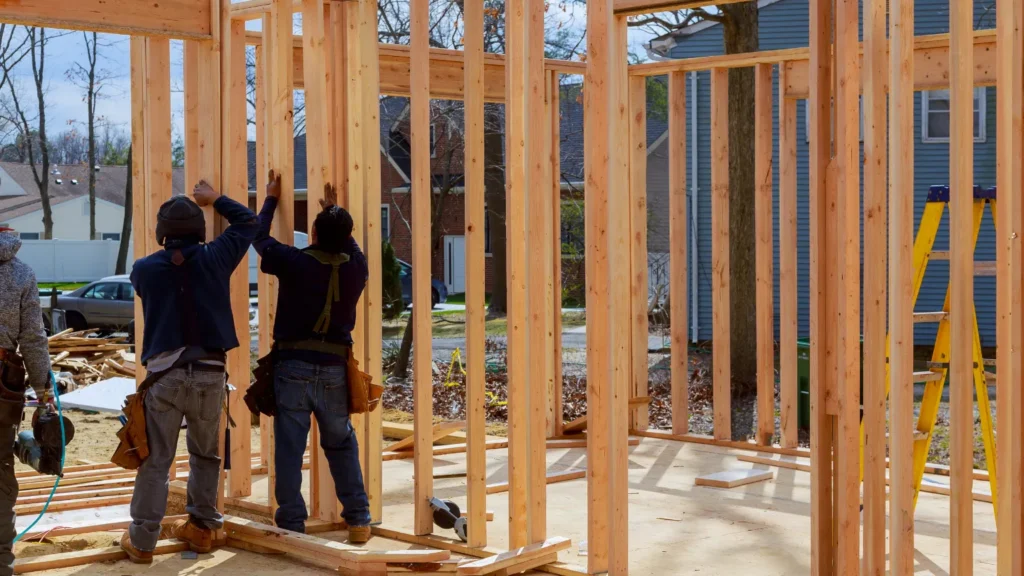
North America
Trade policy at least partly explains lumber prices in the market. The U.S.-Canada softwood lumber dispute is a significant case in point. Tariffs applied to Canadian softwood have pushed up the increase in lumber prices for U.S. home builders, but improvements in U.S. sawmills and reduced tensions will keep future rises in check. North American housing demand continues to be strong, thereby putting a price floor in place.
Europe
The EU has a stable global supply chain and emphasizes sustainable forestry; therefore, Europe’s wood market is relatively stable. European countries are increasingly opting for alternative building materials, which will reduce the demand for traditional timber. However, there might also be continued growth in ecologically friendly products and sustainable materials that may, over time, diminish demand for raw wood, therefore reducing its prices.
Asia
The rising levels of urbanization and infrastructural development within the Asian continent also mean an unstoppable rise in demand for timber. As the demand continues to rise with these countries in the construction of materials, this will ensure high prices in that region. Since Asia is also biased toward imports concerning timbers, any issues relating to the supply chains or other trade matters will also push prices slightly higher.
Future Lumber Industry
The future of the timber industry is on the bright side as long as the development of new materials coupled with sustainable practices in forestry goes up. Then, environmental regulatory issues will not stabilize the volatile prices; neither will geopolitical frictions. There is a more significant role; it is expected that the growing demand for new technologies will stabilize these prices and retain the industry for many years.
The trends regarding the employment of automation and AI in logging, lumber cutting, and other areas are increasing. This makes things much more productive and less messy.
Green construction materials and considerations shall continue to deny the companies’ futures while reducing both environmental impacts resulting from and demand in the markets.
Government Policies: The government can make incentives more available through tax cuts to environmentally friendly practices, price stabilization, and an increase in the supply.
Conclusion
The lumber price outlook into 2025 will be vague concerning economic, environmental, and geopolitical factors. Many drivers point toward stabilizing lumber prices or its downfall in the coming years. These drivers include economic stabilization, improved supply chains, adoption of alternative building materials, and wide-scale implementation of sustainable forestry practices.
However, there is inflation, trade wars, and continuous housing demand that can prevent the decline of prices from being very high. Home builders, contractors, and industry people must keep updated with the scenario. Understanding the main factors behind the timber market trend and the usage of new materials in building constructions will help pass through the boisterous trend of lumber prices in 2025 and thereafter.

Tony Cummins began his career as a carpenter in a sawmill, where he learned the ins and outs of cutting and processing wood. Over the years, he honed his skills and gained vast knowledge about different types of lumber and their uses. After many years of working directly in the industry, he decided to start his company for preparing lumber takeoffs to help contractors.

